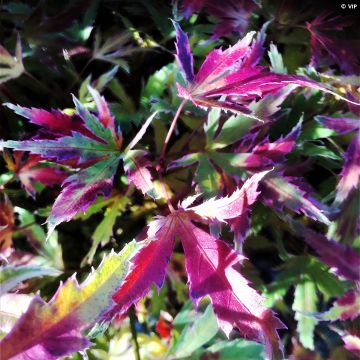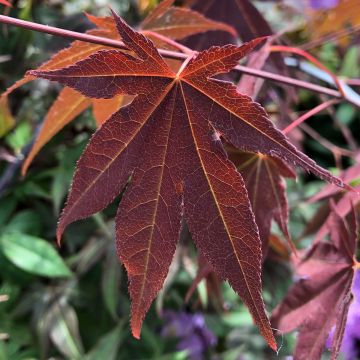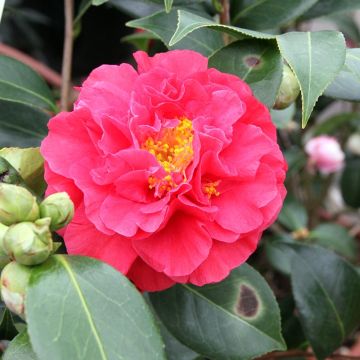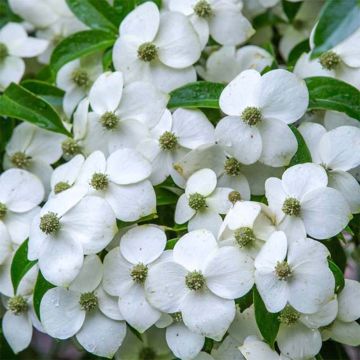

Acer x zoeschense Annae - Zoeschen Maple
Acer x zoeschense Annae - Zoeschen Maple
Acer x zoeschense Annae
Purpleblow Maple, Zoeschen Maple
This item cannot be shipped to the selected country
Oversize package delivery charge from €6.90
Delivery to Corse prohibited
More information
Schedule delivery date,
and select date in basket
This plant carries a 24 months recovery warranty
More information
We guarantee the quality of our plants for a full growing cycle, and will replace at our expense any plant that fails to recover under normal climatic and planting conditions.
Oversize package: home delivery by special carrier from €6.90 per order..
Express home delivery from €8.90.
Delivery to Corse prohibited: UE law prohibits the import of this plant from mainland France to Corse as part of the fight against Xylella fastidiosa. Please accept our sincere apologies.
More information
Does this plant fit my garden?
Set up your Plantfit profile →
Description
Acer x zoeschense 'Annae' or Zoeschen Maple 'Annae' is a hybrid between Acer campestre (field maple) and A. cappadocicum subsp. lobelii (Colchis maple). With a medium size and a rather rounded crown, it stands out in spring with its reddish young shoots, but especially in autumn when its foliage turns yellow, orange, or red. This extremely cold-resistant, deciduous tree is also not demanding in terms of water once well rooted. It will find a place in the garden in a large informal hedge or a grove that will form a distant blaze of colour at the garden's edge in autumn.
Acer x zoeschense 'Annae' was obtained by Count von Schwerin from the Zoeschen nurseries near Berlin (Germany) in 1908. It is a fast-growing tree that reaches a height of between 8 and 10 m (up to 12 m) at maturity. Its initially narrow and erect crown, widens with age. On a mature subject, it can measure between 4 and 6 m wide. The bark is greyish-brown, and the young branches are red. The foliage of this deciduous maple consists of opposite, palmate, and lobed leaves with 3 to 5 deep lobes. They measure between 5 and 10 cm long and are dark green. Autumn and the first cold weather colour the foliage with shades of orange, copper, and red. The insignificant flowering takes place in spring before the leaves emerge. The small flowers are greenish and grouped in corymbs. It is a nectar-rich flowering that attracts pollinators. It is followed by winged fruits, called samaras, which are arranged in pairs and ripen in autumn.
The 'Annae' hybrid maple tolerates various types of soils, but it prefers a well-drained and slightly acidic to neutral soil. It is a beautiful tree for medium to large gardens, parks, or avenues. It offers visual interest for much of the year thanks to its foliage, bark, and attractive young branches. To accompany it, choose, for example, Quercus robur 'Fastigiata' (English Oak 'Fastigiata'), whose columnar habit provides an interesting contrast with the maple's rounded crown. But also Tilia cordata 'Greenspire' (Littleleaf Linden 'Greenspire'), with a pyramidal habit, bright green foliage, and fragrant flowers in summer. Betula utilis var. jacquemontii 'Doorenbos' (Himalayan Birch 'Doorenbos') is deciduous, with a highly decorative white bark that brings an elegant touch to the landscape.
Report an error about the product description
Plant habit
Flowering
Foliage
Botanical data
Acer
x zoeschense
Annae
Sapindaceae
Purpleblow Maple, Zoeschen Maple
Cultivar or hybrid
Other Acer - Maple tree
Planting and care
Plant the 'Annae' Hybrid Maple in spring or autumn in any deep, well-drained soil, preferably with a slightly acidic or neutral pH, in a sunny or partially shaded location. Once established, it does not require watering in the summer and requires no maintenance. Keep the soil moist during the first two summers after planting. Mulching can be beneficial to maintain soil moisture.
Planting period
Intended location
Care
This item has not been reviewed yet - be the first to leave a review about it.
Shrubs by soil type
Haven't found what you were looking for?
Hardiness is the lowest winter temperature a plant can endure without suffering serious damage or even dying. However, hardiness is affected by location (a sheltered area, such as a patio), protection (winter cover) and soil type (hardiness is improved by well-drained soil).

Photo Sharing Terms & Conditions
In order to encourage gardeners to interact and share their experiences, Promesse de fleurs offers various media enabling content to be uploaded onto its Site - in particular via the ‘Photo sharing’ module.
The User agrees to refrain from:
- Posting any content that is illegal, prejudicial, insulting, racist, inciteful to hatred, revisionist, contrary to public decency, that infringes on privacy or on the privacy rights of third parties, in particular the publicity rights of persons and goods, intellectual property rights, or the right to privacy.
- Submitting content on behalf of a third party;
- Impersonate the identity of a third party and/or publish any personal information about a third party;
In general, the User undertakes to refrain from any unethical behaviour.
All Content (in particular text, comments, files, images, photos, videos, creative works, etc.), which may be subject to property or intellectual property rights, image or other private rights, shall remain the property of the User, subject to the limited rights granted by the terms of the licence granted by Promesse de fleurs as stated below. Users are at liberty to publish or not to publish such Content on the Site, notably via the ‘Photo Sharing’ facility, and accept that this Content shall be made public and freely accessible, notably on the Internet.
Users further acknowledge, undertake to have ,and guarantee that they hold all necessary rights and permissions to publish such material on the Site, in particular with regard to the legislation in force pertaining to any privacy, property, intellectual property, image, or contractual rights, or rights of any other nature. By publishing such Content on the Site, Users acknowledge accepting full liability as publishers of the Content within the meaning of the law, and grant Promesse de fleurs, free of charge, an inclusive, worldwide licence for the said Content for the entire duration of its publication, including all reproduction, representation, up/downloading, displaying, performing, transmission, and storage rights.
Users also grant permission for their name to be linked to the Content and accept that this link may not always be made available.
By engaging in posting material, Users consent to their Content becoming automatically accessible on the Internet, in particular on other sites and/or blogs and/or web pages of the Promesse de fleurs site, including in particular social pages and the Promesse de fleurs catalogue.
Users may secure the removal of entrusted content free of charge by issuing a simple request via our contact form.
The flowering period indicated on our website applies to countries and regions located in USDA zone 8 (France, the United Kingdom, Ireland, the Netherlands, etc.)
It will vary according to where you live:
- In zones 9 to 10 (Italy, Spain, Greece, etc.), flowering will occur about 2 to 4 weeks earlier.
- In zones 6 to 7 (Germany, Poland, Slovenia, and lower mountainous regions), flowering will be delayed by 2 to 3 weeks.
- In zone 5 (Central Europe, Scandinavia), blooming will be delayed by 3 to 5 weeks.
In temperate climates, pruning of spring-flowering shrubs (forsythia, spireas, etc.) should be done just after flowering.
Pruning of summer-flowering shrubs (Indian Lilac, Perovskia, etc.) can be done in winter or spring.
In cold regions as well as with frost-sensitive plants, avoid pruning too early when severe frosts may still occur.
The planting period indicated on our website applies to countries and regions located in USDA zone 8 (France, United Kingdom, Ireland, Netherlands).
It will vary according to where you live:
- In Mediterranean zones (Marseille, Madrid, Milan, etc.), autumn and winter are the best planting periods.
- In continental zones (Strasbourg, Munich, Vienna, etc.), delay planting by 2 to 3 weeks in spring and bring it forward by 2 to 4 weeks in autumn.
- In mountainous regions (the Alps, Pyrenees, Carpathians, etc.), it is best to plant in late spring (May-June) or late summer (August-September).
The harvesting period indicated on our website applies to countries and regions in USDA zone 8 (France, England, Ireland, the Netherlands).
In colder areas (Scandinavia, Poland, Austria...) fruit and vegetable harvests are likely to be delayed by 3-4 weeks.
In warmer areas (Italy, Spain, Greece, etc.), harvesting will probably take place earlier, depending on weather conditions.
The sowing periods indicated on our website apply to countries and regions within USDA Zone 8 (France, UK, Ireland, Netherlands).
In colder areas (Scandinavia, Poland, Austria...), delay any outdoor sowing by 3-4 weeks, or sow under glass.
In warmer climes (Italy, Spain, Greece, etc.), bring outdoor sowing forward by a few weeks.























































